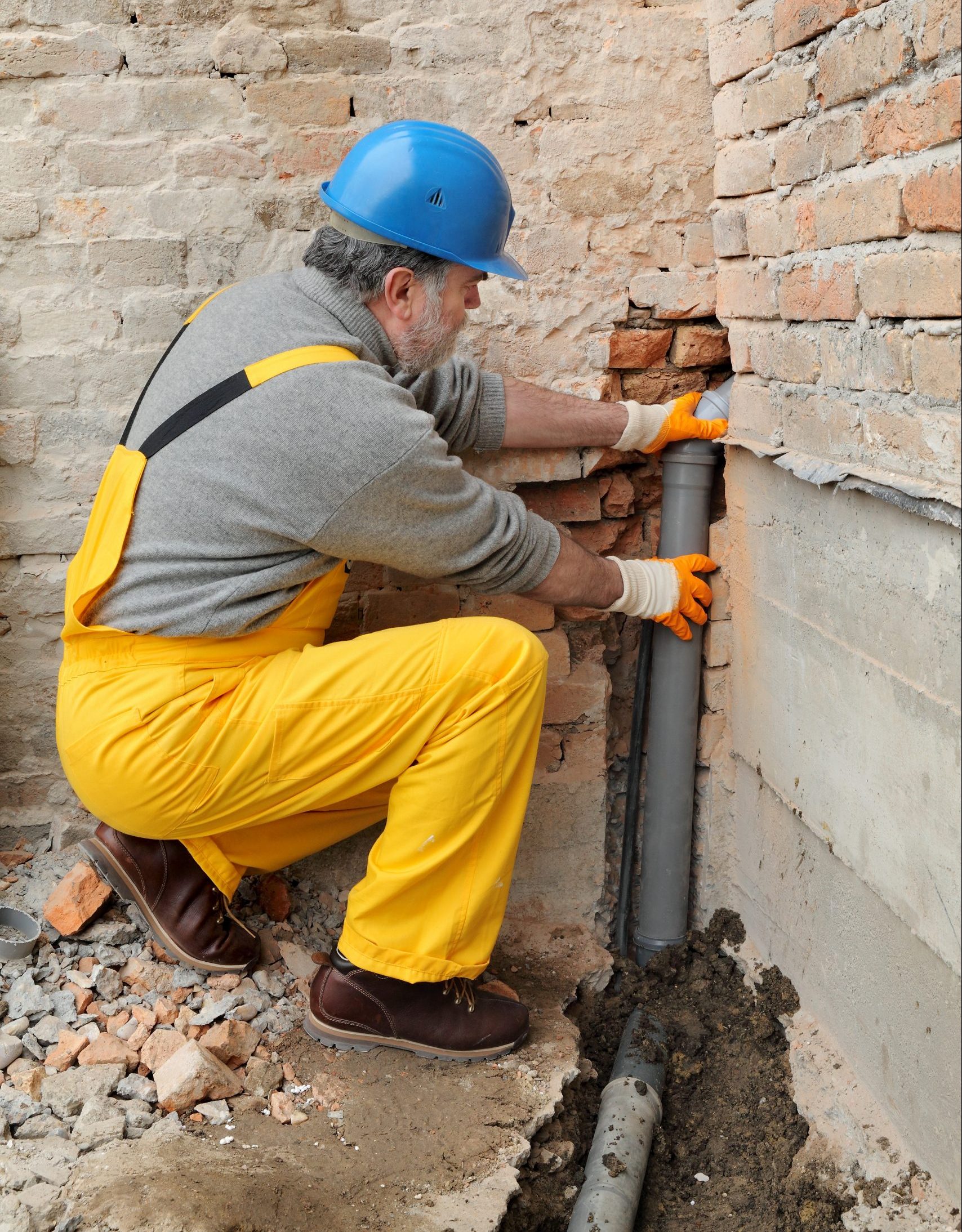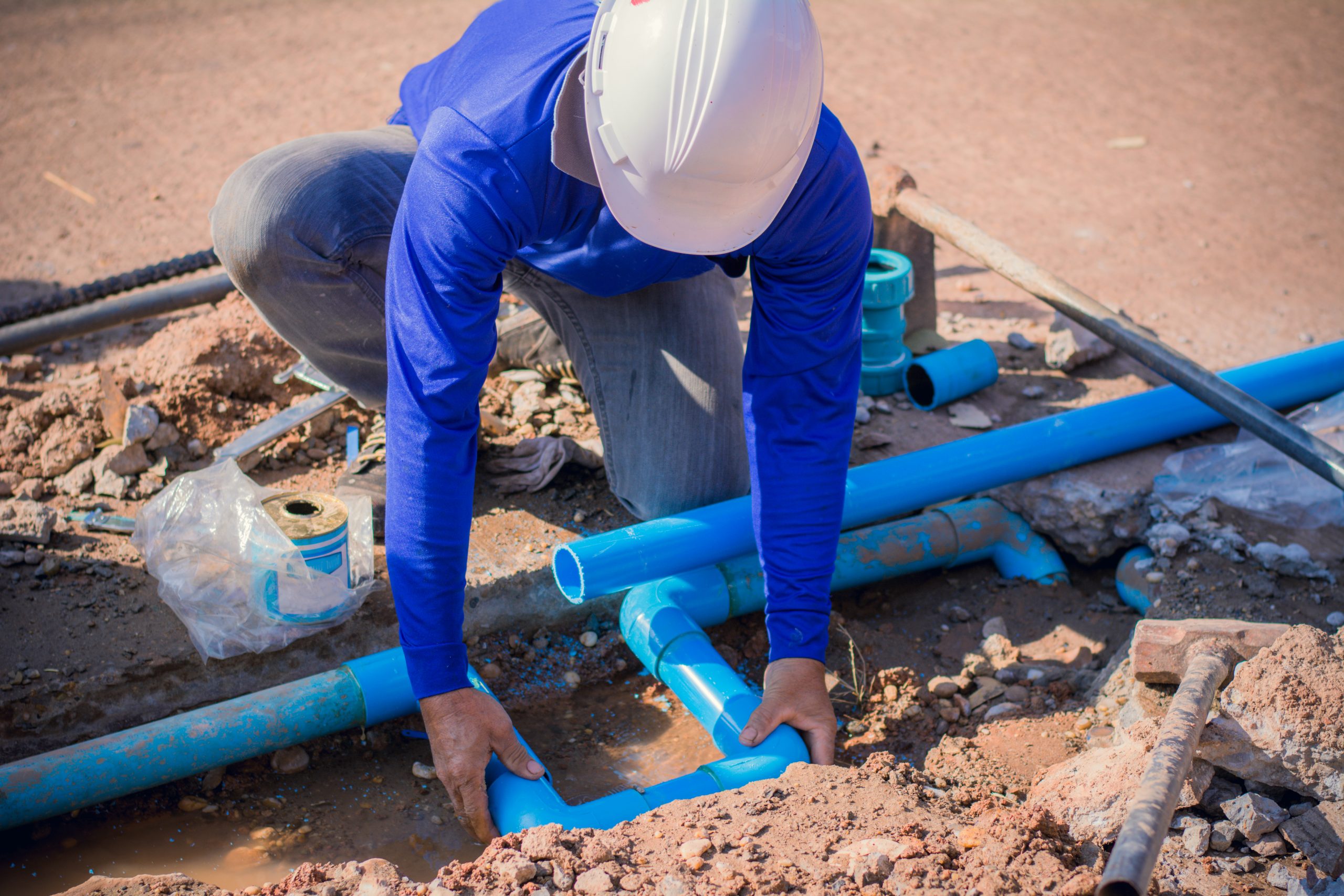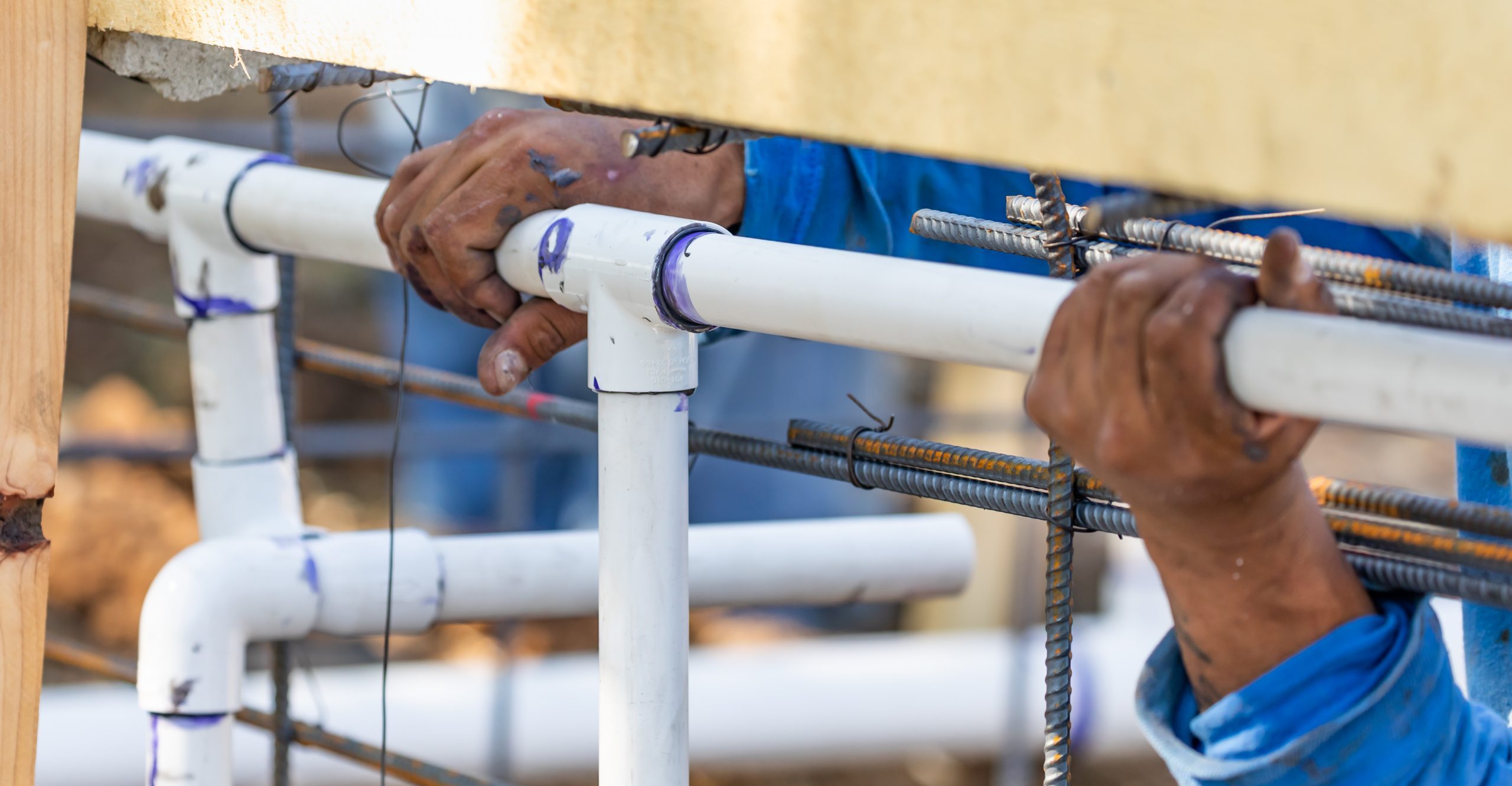Plumbers and Mesothelioma
More than 500,000 people currently hold jobs as plumbers, the U.S. Bureau of Labor Statistics reports.
Plumbers work with many types of materials—not only those that facilitate the carrying of potable water and sewage but also those related to the erecting, maintaining, and improving of occupiable structures. However, prior to the 1980s, many of the materials used by plumbers suffered from a serious defect. Specifically, they contained the carcinogenic mineral asbestos.
Under certain circumstances or conditions, asbestos fibers within plumbing and construction materials can escape into the air where they then can be inhaled or ingested, as did occur among plumbers employed in the trade between the 1940s and possibly as late as the 1990s (and in some instances it is still happening today when plumbers are involved in the renovation of pre-1980s structures but do so without proper safeguards in place).
Some of the plumbers who breathed or swallowed asbestos went on to develop mesothelioma, asbestos lung cancer, asbestosis, or other conditions scientifically linked to occupational asbestos exposure.
No one wants to receive a diagnosis of mesothelioma or other asbestos disease. Nonetheless, when these illnesses onset, the next step for the afflicted is to fight. The fight is expensive, but the cost can be mitigated—entirely so in many instances—by taking action to hold legally accountable the companies responsible for causing asbestos exposure.

Who qualifies as a plumber?
A plumber may also be one who sets up systems by which wastewater may be carried away from the structure or property and fed into an underground sewer line or septic tank.
Tasks typically performed by plumbers include:
- Pipe installation and repair
- Sink, bathtub, shower, faucet, and toilet installation
- Water heater, icemaker, and dishwasher connection
- Sewer and septic connection and repair
Plumbers and asbestos exposure

Among these products were:
- Boilers
- Tanks
- Pumps
- Transite pipes
- Welding rods
- Pipe coatings
- Gaskets
- Valves
- Pipe block
- Joint compounds
- Ducts
- Cement
- Paints
Asbestos was used in these products because it made for a cheap yet effective way to insulate them.
Before the 1980s, it was common to wrap pipes in asbestos blankets or to coat them with a spray or paint to which asbestos had been added so that air temperatures below freezing would not allow the water in those pipes to burst them by turning to ice.
Asbestos thermal insulation also ensured that water inside a hot-water pipe would not cool during the time it took to travel from the heater tank to the faucet (as well, it ensured that no one whose bare hands touched the hot-water pipe would be scalded).
Asbestos became a health risk to plumbers anytime a product containing the mineral was disturbed. Disturbing it meant the product was cut, threaded, filed, hammered, drilled, or fastened.
The danger of disturbing asbestos was that it could allow barely visible fibers of the mineral to split away from the product in which they were contained. In the event of such an occurrence, those newly freed fibers could (and usually did) find their way into the air.
Airborne asbestos did not dissipate quickly. Usually, it was capable of remaining aloft for hours or days before wafting to the floor.
Of course, if a plumber or other tradesperson happened to walk through an area of settled asbestos fibers, those particles could be kicked right back up into the air again for more hours or days.
This was dangerous for plumbers because it was possible to breath or swallow some of the floating asbestos particles. For example, were a plumber in the course of performing work to raise a cloud of asbestos, some particles might enter the plumber’s body through the nose or mouth. The same might happen if an asbestos cloud created by the work of a colleague or other tradesperson elsewhere on the jobsite were to drift toward and engulf the plumber.
For plumbers, in whatever way they encountered asbestos, the volume of particles inhaled or ingested could be quite substantial. The reason is that plumbers often worked in confined spaces with poor ventilation.
Asbestos fibers entering a plumber’s body through the nose or mouth usually became permanently embedded within the lungs or intestines. One day a decade or two or five later, the plumber would begin experiencing symptoms such as a cough that would not go away or a sudden, significant loss of weight. A visit to the doctor would then (but not always) yield a diagnosis of mesothelioma or asbestos lung cancer.

Plumbers and asbestos exposure from non-plumbing building materials
The list includes:
- Drywall
- Insulation
- Ceiling and floor tiles
- Spackle
- Decorative plaster
Of these materials, one that was among those most frequently encountered by plumbers was drywall.
Normally, during construction, pipes would go in first, then drywall would follow. However, to lay pipes or access existing plumbing systems in semi- or fully completed structures, plumbers would be in the position of having to cut into already installed drywall—either to create openings just large enough for pipe to pass through or to open up sizable sections to accommodate bulky materials and hefty tools.
This cutting is what created the risk of asbestos exposure. Prior to the 1980s, many types and brands of drywall were enhanced with asbestos to make each sheet stronger, lighter, noise-absorbent, and less conductive of hot and cold temperatures. Asbestos also helped make it more likely the drywall would survive a fire.
Cutting into asbestos-augmented drywall allowed tiny particles of asbestos to rip away from the drywall and begin floating in the air surrounding the plumber doing the cutting. This plumber would not be the only one endangered by the airborne asbestos. Any colleagues working alongside would also be exposed.
Exposure meant it was possible for asbestos fibers in the air to find their way into the plumber’s lungs or intestines. This would happen were those particles to be inhaled or ingested. From there, the particles would deeply penetrate into the lungs or intestines and stay permanently locked within.
Ten to 60 or more years later, harmful changes to the cells that line the lungs and the abdominal cavity might commence. Those changes could bring about mesothelioma or asbestos lung cancer, or perhaps asbestosis or another asbestos-related condition.
Plumbers and asbestos exposure from power tools
Tools used by plumbers in the heyday of asbestos included electrically operated drills, saws, and screwdrivers.
In those days, power tools made use of asbestos to block heat generated by their motors. This prevented damage to the tools and spared operators from suffering burns.
It did not require much for asbestos to break free of these power tools. The wear-and-tear from normal operation released small amounts of asbestos. Also, occasionally, tool housings would need to be opened for servicing—another circumstance under which it was possible for asbestos to escape into the air.
When asbestos goes airborne, particles of the mineral can float for hours or days at a stretch. It is while they are aloft that they can be breathed or swallowed by the tool user. Once inside the body, the asbestos fibers lodge within vital organs. That can begin the slow conversion of healthy cells into damaged ones that mutate into cancer.
Plumbers and asbestos exposure from working alongside other trades
Up until the 1970s, crews consisting of electricians, painters, insulation installers, bricklayers, and other trades worked with specialty products made in part from asbestos.
Those crewmembers cut, drilled, hammered, and drove screws, the same as did plumbers. And with every cut, every bore, every swing of the mallet, every turning of the threads came the release of asbestos into the air.
This posed little risk for plumbers who sequenced into the project ahead of those other trades. They could get in and out before the others began releasing asbestos into the air. That left plumbers to worry about only their own release of asbestos.
Unfortunately, plumbers rarely led the parade. They were often back toward the middle of the procession and sometimes they brought up the rear. Which meant they followed behind trades that had already put asbestos into the air. Consequently, plumbers were exposed to asbestos going in and for the entirety of the time they were present on the jobsite.

Plumbers and asbestos exposure from transite pipe
Transite pipe was lighter and stronger than conventional, non-asbestos cement pipe. This made it popular for underground water mains, sewer lines, and street runoff lines ( by 1980, more than a half-million miles of transite pipe had been laid across the U.S.).
However, like any other product containing asbestos, transite pipe became a health hazard to plumbers mainly when it was cut or drilled during an installation, repair, or removal.
Owing to those kinds of actions, asbestos fibers could break free and become airborne. Once airborne, they could be breathed or swallowed by unsuspecting plumbers.
The process of inhaling or ingesting asbestos particles causes them to be drawn deep inside the lungs or intestines. The deeper they travel, the less likely they can ever come back out.
And the longer those particles remain trapped within the body, the more time they have to cause damage to healthy cells. The molecular characteristics of asbestos are such that the damage done to healthy cells manifests in mesothelioma, asbestos lung cancer, asbestosis, or other serious conditions.
Plumbers’ rights to compensation after asbestos exposure
A plumber who came into contact with asbestos and who developed one of these illnesses may be entitled to seek financial remuneration from the businesses responsible for that exposure.
Loved ones of plumbers who contracted mesothelioma or one of the other asbestos-related diseases might also be entitled to money from those same businesses in certain circumstances.
Were a plumber or a plumber’s loved ones to receive such compensation, it would be to pay for the cost of medical treatment, for lost wages, and for other types of specific and measurable damages.
Compensation can be sought by filing a lawsuit against the companies that exposed plumbers to asbestos. If the lawsuit is won by the plumber or the plumbers’ loved ones, the amount awarded could be potentially very large.
Often these lawsuits do not play out all the way to a verdict. Instead, the defendant company or companies may seek to reach an out-of-court agreement with the plaintiff plumber—a settlement, in other words—so as to avoid a costly trial.
In some instances, it is not possible to sue an asbestos products maker, distributor, or retailer if that entity has filed for bankruptcy. However, bankruptcy only spares companies from being hauled into court. It does not automatically get them off the compensatory hook. A special system exists to help asbestos-injured plumber obtain money from bankrupt companies.

About the author…
Beth Gori graduated from the State University of New York at Buffalo in 1995 with a degree in Biology. She attended law school at St. Louis University and graduated with a J.D. and certificate in Health Law Studies in 1999.